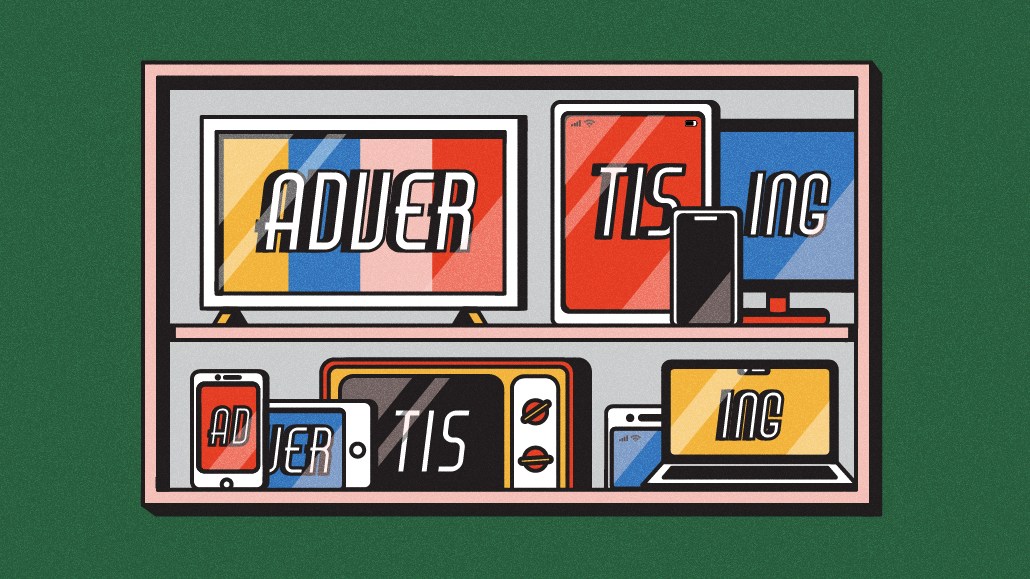Why DOOH is a big draw for startups and direct response marketers

In a quest to boost brand awareness, small businesses and startups that were once focused predominantly on direct response marketing are increasingly adding digital out-of-home advertising to their media mixes.
“A lot of startups used to be very performance focused and have to be when you’re trying to be super efficient,” said Leah Askew, Digitas North America’s svp and head of precision media. “Out-of-home is just a more digestible next step as you’re moving up the funnel, which is frankly what you need to be doing.”
This is especially true as the digital ad marketplace has become increasingly saturated with advertisers, creeping CPMs and data privacy crackdowns. Many are pivoting to brand awareness tactics, and rethinking their advertising on Facebook and Instagram. DOOH advertising offers flexibility in media buying and creative, in addition to targeting, measurement and programmatic marketing tools thanks to technological advances.
“Things have come a long way from buying billboards and transit shelters. We’re seeing a lot more interactive units, unique units in different places,” Askew added. “The industry is spending its time digitizing.”
In light of this, brands like oral care company Cocofloss, Hero Cosmetics and Joah Beauty have recently launched DOOH efforts with SOS, a nationwide network of smart vending machines in the bathrooms of high-traffic public access locations like Rockefeller Center in New York and Fenway Park in Boston.
“We are very focused currently this year on increasing our brand awareness,” said Haejin Chang, brand director at Joah Beauty. “That’s why digital out-of-[home] is very important for us. The beauty space is very cluttered. How can we tap into new consumers? [DOOH] is one way.” (Chang did not disclose specific DOOH ad spend details.)
Drink brand Lemon Perfect and floral company Venus et Fleur have invested in similar efforts. They’re pushing to diversify their media spend beyond performance marketing to include more brand awareness and leveraging DOOH via kiosks and other digital screens.
It’s a first-time investment for Lemon Perfect, which is testing the media channel to get in front of shoppers as the shift beyond the pandemic continues. For Lemon Perfect, DOOH offers flexibility to pivot budget and creative, similar to online media channels like search or social media advertising. Cost efficiency, flexibility on campaign run times and the ability to rotate creative were major selling points for the brand. (The brand did not respond to a request for specific DOOH spend figures.)
“As long as they continue to shop in-person and visit lifestyle points of interest (shopping malls, golf courses, etc.), DOOH will continue to be part of our marketing strategy,” Richa Anand, director of brand marketing at Lemon Perfect, said in an emailed statement to Digiday.
Meanwhile, Hero Cosmetics increased its DOOH investment this year, accounting for about 5% of the brand’s awareness media budget, according to Amy Calhoun, vp of marketing at Hero Cosmetics. This is the brand’s third year leveraging DOOH, which has seen a steady increase in spend year-over-year, per Calhoun. Hero Cosmetics’ efforts started in the summer of 2021 with digital taxi toppers.
Over the last year, there’s been an estimated 20% increase in DOOH client requests at Quan Media Group, according to CEO Brian Rappaport. In January, one brand ran a campaign that was solely DOOH, leveraging bulletins, kiosks and digital boats with QR codes attached to understand effectiveness, he added.
“The ability to utilize creative flexibility, not incur production costs, shorten deliverable timelines and most of all — play off of [in real life] events — while tapping into [user generated content] has become so appealing to early stage growth brands,” Rappaport wrote in an emailed statement to Digiday.
OOH ad revenue increased 20.7% in 2022 from the year prior, accounting for $8.6 billion, according to the Out of Home Advertising Association of America. Meanwhile, the DOOH segment jumped 24.2% compared to 2021, per the OAAA, making it the second consecutive year DOOH grew by over 20%.
The flexibility of DOOH is a major selling point for many advertisers, according to agency executives. And even with the economic downturn putting media budgets under a significant amount of scrutiny, DOOH spend is expected to continue because of that.
“We’ve got the data to prove that digital out of home is showing strong lifts in awareness and consideration,” Askew said, adding that DOOH is driving performance when it runs alongside other media, namely social advertising. “That increase in spend year-over-year has given us the proof. So I frankly expect to see it continue to 2023 for that reason.”
More in Marketing

Pitch deck: How Amazon is recasting Twitch as a core part of its CTV pitch
Amazon is positioning Twitch as a defining asset in its CTV ambitions.

Netflix transforms former mall department stores into experiential venues
The location in Dallas opens this week, and one at the King of Prussia mall near Philadelphia opened last month.

Future of Marketing Briefing: AI has created a new talent paradox in programmatic agencies
The job isn’t execution anymore. AI handles that. The job is judgement.







